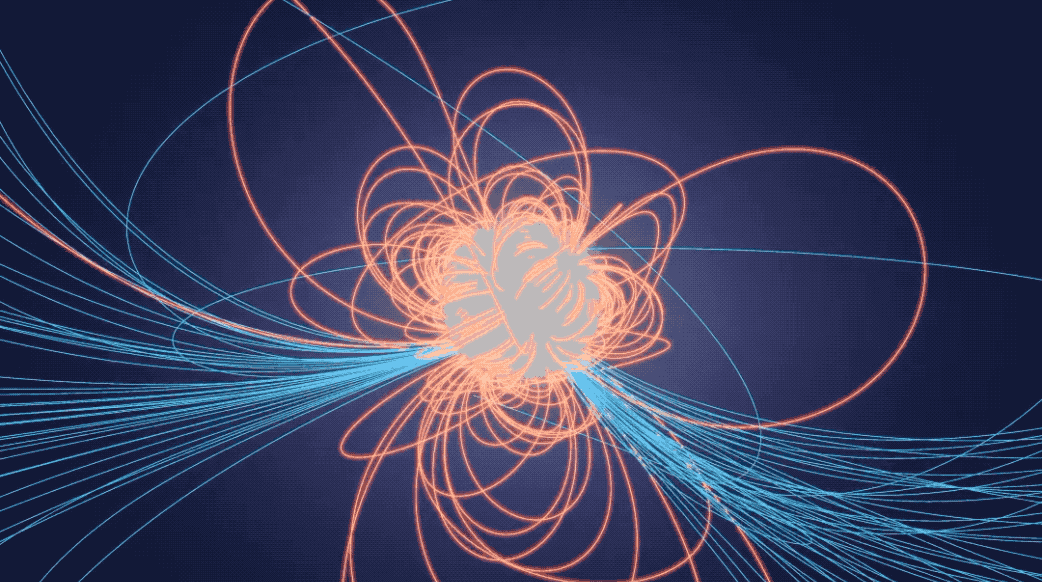NICER / ISS Science Nugget
for January 2, 2020
Theorists speculate on implications of NICER's recent key result
Among the ground-breaking results that NICER recently released for the millisecond pulsar J0030+0451, the paper by
Bilous et al. describes the implications of NICER's finding that the pulsar's magnetic field is not a simple dipole
centered on the star (see Figure).
NICER's study of thermal X-ray emission from the stellar surface provides a map of
the high-temperature (approx. 1 million Kelvin) regions, showing them both to be located in the star's "southern"
hemisphere, with one small and circular spot, and another extended and crescent-shaped. These regions represent the
star's magnetic poles — the so-called footpoints at which the global magnetic field lines intersect with the surface.
How they came to be off-center and asymmetric is not yet known, but theoretical predictions of such configurations were
made by M. Ruderman (Columbia University) and collaborators decades ago. The mechanism postulated by Ruderman et al.
involved a long-term interaction between two quantum fluids within the star: superconducting protons, which support the
magnetic field, and superfluid neutrons, which support the star's spin. As the pulsar slowly loses energy and spins
down over eons, the superfluid vortices push the proton flux tubes around, ultimately bringing the polar caps into one
of two possible configurations — either in alignment with the spin axis, or both into the same spin hemisphere.
NICER's unique map of a millisecond pulsar's polar cap geometry represents the first evidence for such long-term
quantum-fluid interactions within a neutron star.

Figure:
Notional magnetic field geometry of PSR J0030+0451 based on the locations and shapes of the magnetic polar caps derived
from NICER X-ray measurements. Where the "open" (blue) and "closed" (orange) field lines intersect with the surface is
a function of the combined dipolar and quadrupolar field geometries. This image is one frame from an animation viewable
here.
<< Previous
Main Index
Next >>